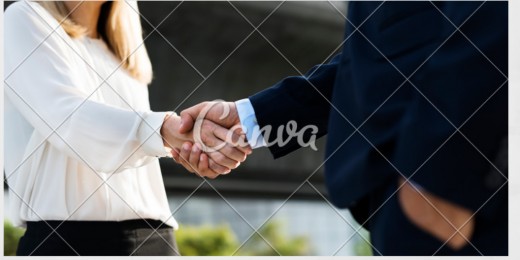Gender and Politeness
1. Introduction
The
fact that men and women, to some extent, speak different “languages”
may lead to think that they express opinions, preferences in various
linguistic terms. The purpose in this section is to shed light on how
men and women manipulate in politeness phenomenon.
2. Opinions about Gender and Politeness
According
to Jaouhari (2004), it is claimed that both men and women are polite
but women tend to be more flexible, in politeness than men. This claim
is confirmed by Brend (Cited in smith 1985 :70) who says that female
speakers use a polite pattern of assertive intonation while men use
deliberate pattern.
On the expressionistic grounds, women are shown to be more polite via frequent use of some strategies to express themselves .Turner (cited in Gumpers 1982 : 222) notices that women use more indirect expressions than men. The notion of indirectness or off-record for Goody (1978 : 216) is a motivation for politeness. Indirectness in Speech according to Goody is used to avoid certain cultural taboos or touchy areas and certain terms which are inappropriate to face redress. In other words, the fact of making face threatening acts shrinking from responsibility of doing it.
Also, explaining male-female difference in speech, Deuhar (cited in Chambers 1995 : 130-1) says that the strategy known as “face” is the mechanism that determines women’s greater use of standard speech. Deuhar’s view point coincides with the properties of interact ant in the field of politeness cited in Yull (1997 : 134) and Goody (1978 : 66) . For Goody,
“ Face the public self-image that every member wants to claim for himself consisting of two related aspects :
a-Negative face : The basic claim to territories, personal preserve, rights to non distraction. I.e. To freedom of action and freedom from imposition.
b- Positive face : the positive consistent self image or personality (crucially including the desire that this self-image be appreciated and approved of) claimed by interrtants”.
In the confluence of Deuhar and Goody point of views, one notices that women are more aware of strategies of politeness than men.
Within the same context, Roger (cited in Thorne and Henley1975 :250)says that women possess the ability to talk sweet with their infants and peers, but talk smart with anyone who might threaten their self images.
What is meant by this is that women show a great tendency to shift in response to shifting situations. The fact which may implicitly bring about women’s flexibility with the circumstances or variables of politeness cited in Goody (1978: 79):
On the expressionistic grounds, women are shown to be more polite via frequent use of some strategies to express themselves .Turner (cited in Gumpers 1982 : 222) notices that women use more indirect expressions than men. The notion of indirectness or off-record for Goody (1978 : 216) is a motivation for politeness. Indirectness in Speech according to Goody is used to avoid certain cultural taboos or touchy areas and certain terms which are inappropriate to face redress. In other words, the fact of making face threatening acts shrinking from responsibility of doing it.
Also, explaining male-female difference in speech, Deuhar (cited in Chambers 1995 : 130-1) says that the strategy known as “face” is the mechanism that determines women’s greater use of standard speech. Deuhar’s view point coincides with the properties of interact ant in the field of politeness cited in Yull (1997 : 134) and Goody (1978 : 66) . For Goody,
“ Face the public self-image that every member wants to claim for himself consisting of two related aspects :
a-Negative face : The basic claim to territories, personal preserve, rights to non distraction. I.e. To freedom of action and freedom from imposition.
b- Positive face : the positive consistent self image or personality (crucially including the desire that this self-image be appreciated and approved of) claimed by interrtants”.
In the confluence of Deuhar and Goody point of views, one notices that women are more aware of strategies of politeness than men.
Within the same context, Roger (cited in Thorne and Henley1975 :250)says that women possess the ability to talk sweet with their infants and peers, but talk smart with anyone who might threaten their self images.
What is meant by this is that women show a great tendency to shift in response to shifting situations. The fact which may implicitly bring about women’s flexibility with the circumstances or variables of politeness cited in Goody (1978: 79):
BY: MUSTAPHA KOURBANE








No comments:
Post a Comment